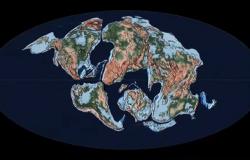Since the start of its mission in 2012, NASA’s Curiosity rover has repeatedly detected methane on Mars, specifically near its landing site inside the 90-mile-wide Gale Crater.
According to the team running the equipment, Mars’ methane is behaving strangely: it only appears at night, fluctuates seasonally and unexpectedly rises to levels 40 times higher than usual.
Even more intriguing is the fact that the gas is not present in appreciable quantities in the Martian atmosphere and has not been detected near the surface elsewhere on the planet. So what happens in Gale Crater?
A group of NASA researchers led by planetary scientist Alexander Pavlov suggests that Mars’ methane is trapped beneath a crust of solidified salt within the crater’s regolith.
According to the research, published in Journal of Geophysical Research, warm daytime temperatures can weaken the crust, allowing methane to slip away at night. And the weight of a dense rover passing over the crust could also break it, causing the gas to explode in a concentrated puff – like a burp.
Read more:
Scientists investigated their theory here on Earth, employing simulated regolith from Mars, a type of salt known as perchlorate, common on the Red Planet, and neon gas as a substitute for methane.
Experiments were conducted inside a Mars simulation chamber at NASA’s Goddard Space Flight Center. The results revealed that a salt layer could develop under specific conditions, trapping methane beneath it.
Although the presence of a solidified salt crust may explain variations in the behavior of methane on Mars, researchers continue to question the origin of this gas on the planet.
On Earth, methane is mainly generated by living organisms, but so far no definitive evidence of life on Mars has been detected. Gas can also be produced by geological processes, which means that its presence is not necessarily a sign of life.






